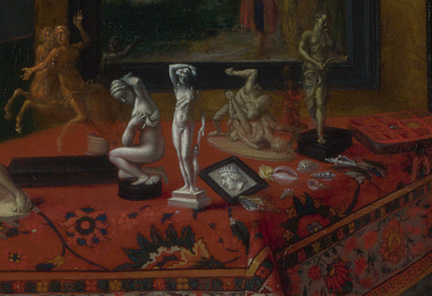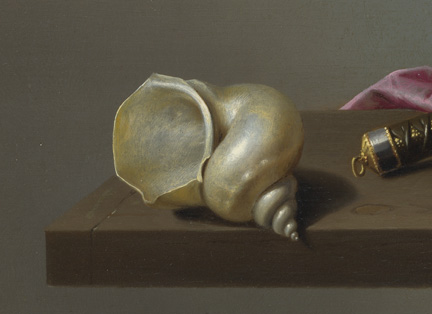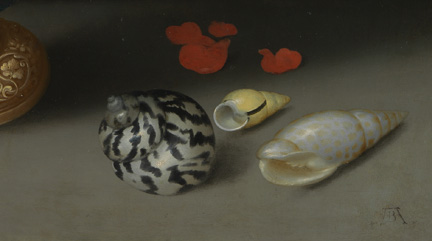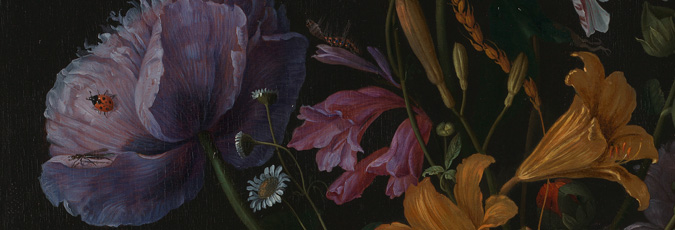Seashells
Seashells from distant oceans featured prominently in the ‘wunderkammers’ (cabinets of wonder) formed by wealthy connoisseurs in the 16th and 17th centuries, which gathered curiosities of nature and of human creation for learning and display. In the 17th century, the Netherlands was the centre of European trade in shells.
Along with spices and other merchandise, ships of the Dutch East India Company brought back colourful and spectacular specimens from the Indo-Pacific; those of the Dutch West India Company, from the West Indies and Caribbean. The passion for collecting shells rivalled ‘tulip mania’, and contemporary writers mocked ‘tulip maniacs’ and ‘shell lunatics’ equally: "It is bizarre what a madman spends his money on", scoffed one author.

Like tulips, shells were prized for their bizarre forms and unusual markings; unlike tulips, their beauty did not fade but possessed the permanence of gemstones. Shells are often included in flower still lifes of the late 16th and early 17th centuries. In this context, they are a reminder of the beauty of God’s creation and a contrast to the ephemerality of the flowers nearby. The cost of exotic specimens could be viewed as a sign of wealth and sometimes vanity, and their distant origins evidenced the global reach of the Dutch trading empire.

Ambrosius Bosschaert’s Still Life with Flowers in a Wan-li Vase depicts three shells: (from left to right) a West Indian top shell ('Cittarium pica'); the shell of 'Amphidromus perversus', an Indonesian land snail; and an episcopal mitre shell ('Mitra episcopalis'), found in the Indo-Pacific from East Africa to eastern Polynesia.


